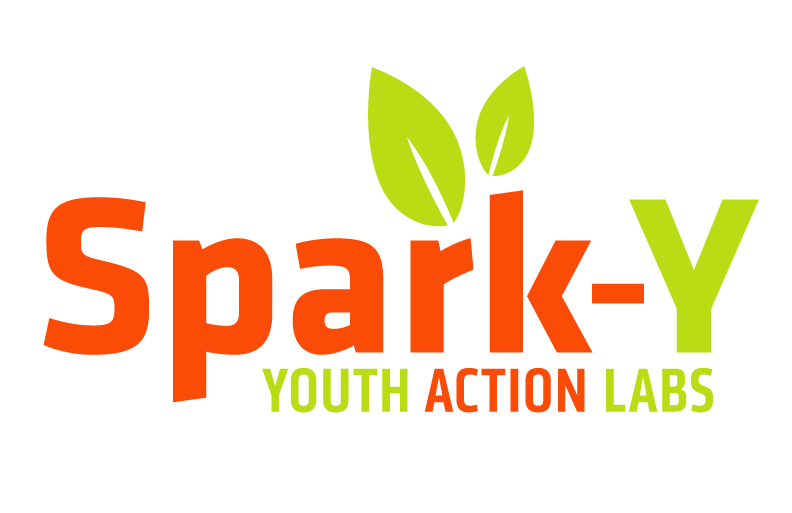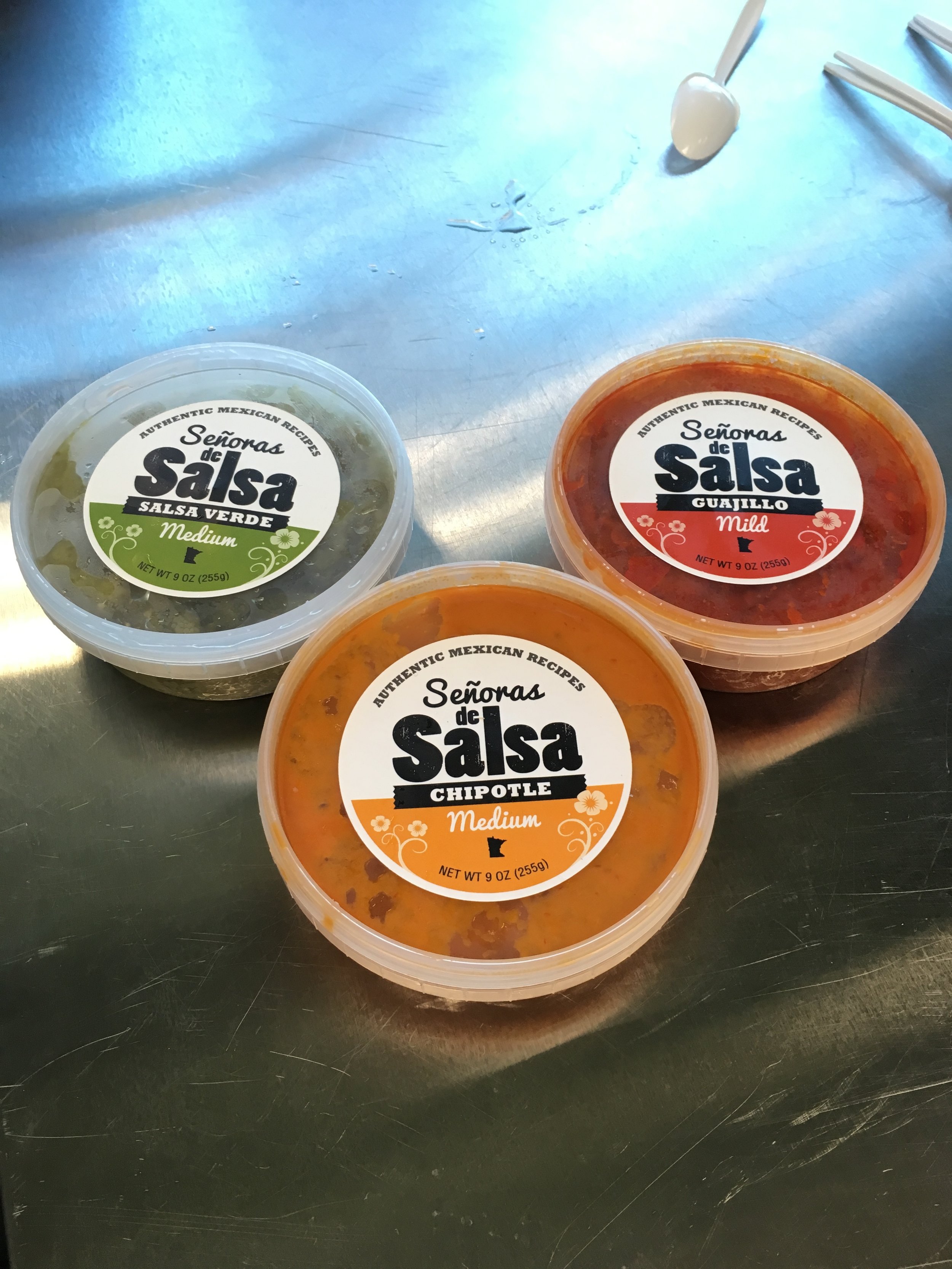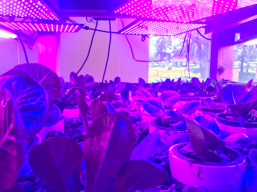This latest post come from Spark-Y Annual Internship Good Acre team,
written by Elise Hanson and Daijiro Yokota.
Daijiro and Elise with the Señoras de Salsa
Small businesses are important to building strong local economies as they provide value-driven jobs, products, and innovation. In the beginning stages of starting a business there are many challenges in paving a path to becoming a thriving business. However, this can be such a large endeavor, that many businesses do not survive. Through a partnership with Lakewinds Food Co-op and The Good Acre, the Maker to Market Program was started to create an infrastructure so that the Makers have a successful launch for their business.
The Good Acre is a nonprofit food hub that offers “multiple programs that promote local agriculture efforts in and around Minneapolis-St. Paul, with an emphasis placed on supporting low-income, immigrant, independent farmers.” The Maker to Market program serves as an incubator for four up-and-coming food businesses, known as the ‘Makers.’ Throughout the six-month program the Makers have access to commercial kitchen space at the Good Acre, the Good Acre Farmer Network for local ingredient suppliers, and distribution to all Lakewinds stores.
As the Spark-Y Good Acre intern team, we play an important role of working with three of the Makers to help them achieve their business goals. We met with each of the Makers to understand what their business plans are and negotiate tasks that would help them reach their end goal. Each of the Makers are at different places in their business journey so we worked with them on their next steps. We’re working on a variety of projects like doing product demos, collaborating to create a product feedback survey, creating social media pages, formulating a job description, giving marketing feedback, creating marketing materials, writing a press release, and doing probiotic analysis research.
We both gained real-world experience in working directly with our clients, developing an organized work plan, and using consistent collaboration to achieve high performance on our projects.
Our Takeaways:
“I am inspired by the Makers’ passion for their products and the care that goes into each bottle. Every business decision is made with shared well-being in mind- from the environment, the farmers, the cooks, to the community that their products feed.” - Elise
“It was a great experience to work with these three Makers at the Good Acre. Each Maker has very different mindsets about their business but all of them are exceptionally passionate about what they are doing. I really enjoyed meeting with people who love their job every week and learned a lot from them.” - Daijiro
Meet the Makers:
Señoras de Salsa
Danielle Wojdyla is the business owner of this new social enterprise that creates delicious authentic Mexican salsa unlike any other salsa products in the store. Señoras de Salsa takes another step to empower immigrant women and share bold flavors with the community. Their flavors are Guajillo, Salsa Verde and Chipotle (the intern’s favorite).
Caldo Foods
Mona Khemakhem and her husband Anis created mediterranean recipes in their own kitchen. Friends and family took such a liking that they looked for places to buy similar products in retail, but nothing like their recipes existed. So they set out to create their own product line of Mediterranean-inspired, locally-sourced, all-natural food products. They have goals to make Caldo products available nation-wide. They have a growing product line starting with Caldo Harissa, Carota(the first carrot dip on the market) and Chimichurri.
You Betcha! Kimchi
Joe Silberschmidt and Iman Mefleh began their fermenting business from their small apartment with the mission of supporting sustainable agriculture through partnerships with local organic farmers. They use the freshest ingredients to make their kimchi “a Minnesotan twist on the Korean classic.” Their kimchis feature three spice levels: Minnesota Nice, A Bit Nippy and Uff Da!




























